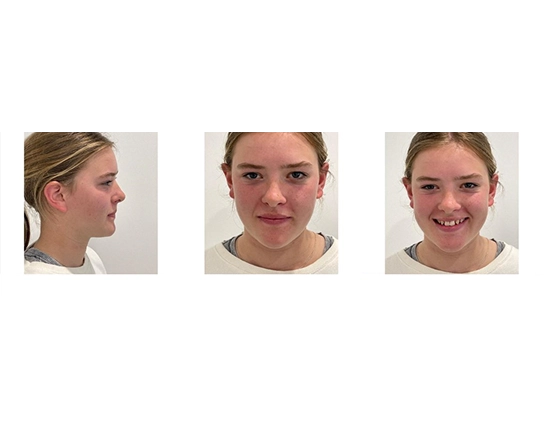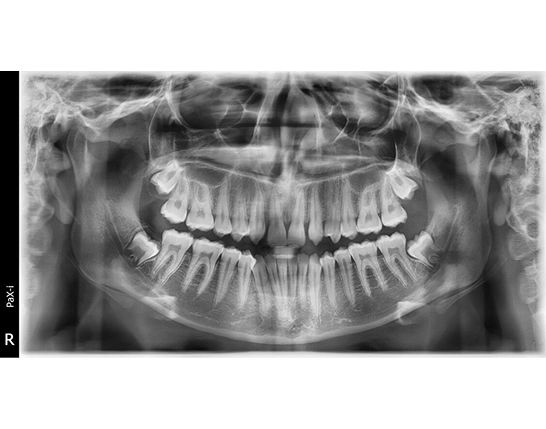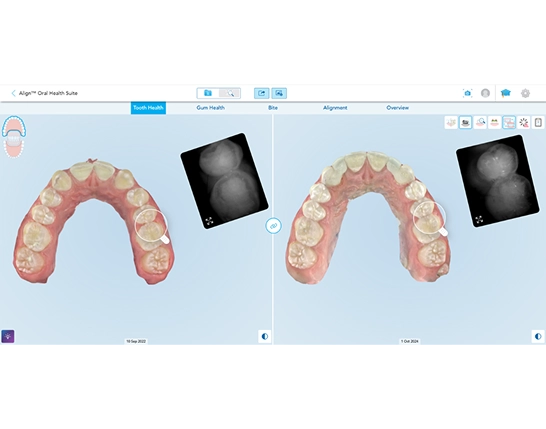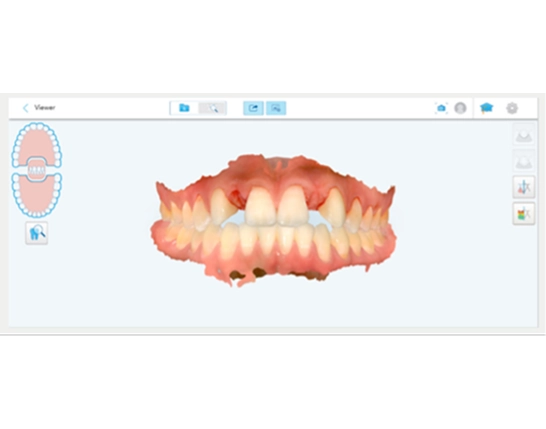Align Technology creating comprehensive dental solutions for modern practices.
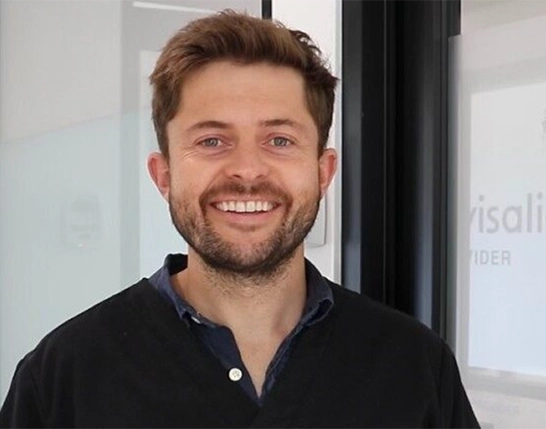
Dr. Jack Milgate is the leading dentist and owner of Barwon Heads Dental in Victoria, Australia.
With over twelve years of experience, he’s committed to providing top-quality dental care using digital technology.
Dr. Milgate holds a dental degree and a master’s in public dental health from La Trobe University. He has been a Key Opinion Leader for Align Technology since 2019, and in his free time he enjoys playing tennis and traveling.
Introduction.
As a general dentist, I see potential patients walk into my practice with all sorts of oral health issues every day. Most of them are not aware of all that is happening inside their mouths and generally come to see me for issues that are obvious to what they see in front of a mirror or when they are in discomfort and pain.
We are traditionally trained to attend to the prospective patient’s chief complaint, and many clinicians have a hard time communicating other important findings. Usually, those findings stay between the clinician and assistant and are kept on paper or your practice management software for months, even years, without being addressed until the next emergency visit.
Sometimes, the clinician feels uncomfortable adding other procedures to the treatment plan, fearing that he or she will be labeled as an individual trying to upsell treatment. Unfortunately, we have seen in the media cases of dental professionals taking advantage of people by overtreating them. While these are very few individuals, a bad reputation has impacted the dental guild worldwide.
As a professional, I have learned to remove biases and assumptions about the person in the dental chair. I show all the evidence and offer comprehensive treatment plans based on the individual’s perceived needs to provide function and esthetics with long-term solutions, not just repair.
To present evidence and deliver comprehensive education, I leverage the power of technology, specifically iTero™ scanners. These devices equip me with the tools to not only attract potential patients to my practice but also help me to create digital records for diagnosis, educate patients for informed decision-making, plan, design, treat, and monitor their progress throughout their journey (Figure 1). This emphasis on technology underscores the evolution of dental practice and its benefits for both professionals and patients.
Align Technology’s digital solutions for oral health clinicians.
In late 2022, a 14-year-old female patient visited my office for a new patient exam. Her main concern was the noticeable gaps in the upper arch next to the central incisors. Her older sister had been a patient of mine the previous year, and I had successfully created a buildup for a missing left upper lateral incisor and reshaped with a veneer the right upper canine that had moved into the missing position. The family expected me to replicate the procedure to address her chief complaint.
Using the advanced tools and features of the iTero™ scanners, I could confidently and systematically conduct a customized consult and treat this patient, helping facilitate a high-quality outcome.
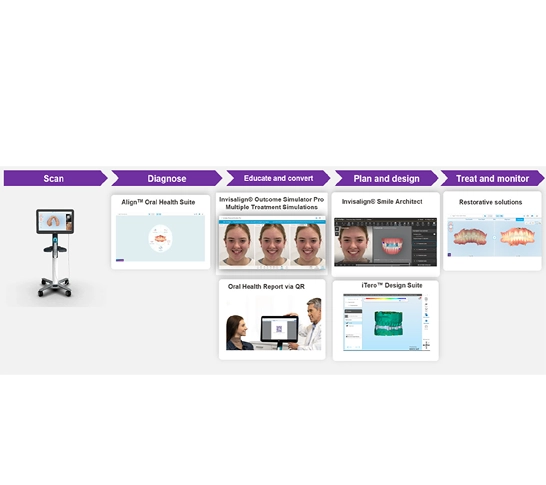
Figure 1
iTero™ solutions for your dental practice.
Scan
In my clinic, we routinely scan every prospective new patient and periodically every established patient.1
This practice was implemented for the following reasons:
- The practice generates a digital file in just a few minutes2 as part of oral health records, which helps monitor existing or new clinical findings over time.
- The clinician and assistant can record more clinical findings into the practice management software, enabling quality control given the information provided through visualizations about the size, color, texture, and position of concerns in teeth and soft tissues, which are visible on a screen to all stakeholders at once.
- The clinician can show patients a detailed view of the identified findings which improves communication during consults — oral hygiene, dental anomalies, dental conditions, and clinical findings related to soft tissues, occlusion, and alignment.
Diagnose
Based on her dental history and radiographic findings, I diagnosed that she was congenitally missing the upper lateral incisors (see Figure 2).
Since the launch of the Align™ Oral Health Suite, our practice has leveraged this solution to address not only the chief complaints but also to demonstrate the findings and discuss treatment options while the patient is in the dental chair.
When patients of record return for periodic annual or semiannual visits, we also use the suite to compare how dental conditions and treatments have evolved. This is particularly useful in instilling a sense of quality control in our clinicians and creating engagement and accountability among patients.
Dental providers and patients should work as a team to promote optimal outcomes. And when treatments fail, or directions are not being followed accordingly, I found it helpful to use these records to find root causes and correct the course. As a result, a more transparent and trusting dynamic between doctor and patient is established, and both patients and doctors will win by realizing more efficient treatments when indications are followed as prescribed.
Swipe to view more.
Communicate, educate, and convert
When I informed the patient’s mother that her daughter had congenitally missing upper lateral incisors, she was surprised. I discussed treatment options, and the mother was leaning toward a reshaping of the upper teeth or composite buildups. I had offered teeth movement with Invisalign® aligners to open space for the missing lateral incisors and then restore with cantilever bridges on both sides since this patient was still growing and was too young for dental implants. The parent was not excited about this option. I suspected they did not understand my words, so I decided to run a simulation with the Invisalign® Outcome Simulator Pro that includes an in-face visualization and multiple treatment simulations (MTS). (see Figure 3)
In my experience, it is often difficult for non-clinical individuals to visualize what we are verbally communicating. Not only do we tend to use technical language, but we also make assumptions about the knowledge and understanding level of the person sitting in the dental chair and the parents. Often, these patients are afraid to express that they did not understand or make us feel they understood our message. Then they go home and don’t come back because the treatment plans offered were not clear to them, or they did not find the value for what they think they are getting.
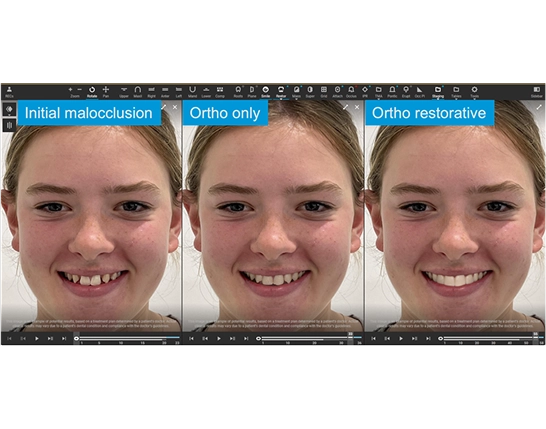
Figure 3
Invisalign® Outcome Simulator Pro shows the in-face simulation with Multiple Treatment Simulations (MTS).
The before on the far left, the simulation with Invisalign® aligners only in the center, and the simulation combining the Invisalign aligners and the Smile Architect™ software solution on the far right.
The simulation was quickly created and helped the patient and mother understand my goals and options and facilitated a conversation. From Figure 3, on the far left, we have the initial state; in the middle, I showed them what her smile could look like after moving her teeth with Invisalign® aligners, and on the far right, they could envision how we could move her teeth and also include restorative options in a minimally invasive manner with the Invisalign Smile Architect™ software. This was an option to help us save as much healthy dental tissue as possible while opening the gaps for dental implants once she gets older, given her continued growth and development.
With this feature, I can customize the simulations with 3D controls and mark missing teeth, unmovable teeth, and restorations, showing the patients the customization of their treatment. The simulations supported the mother and daughter’s decision to pursue a comprehensive approach using Invisalign® aligners and bilateral cantilever bridges.
Plan
My treatment plan included an orthodontic and restorative solution using the Invisalign Smile Architect™ software (see Figure 4). We shared the simulations and the approved treatment plan to help her to visualize how we planned the final position and restorations to look like.
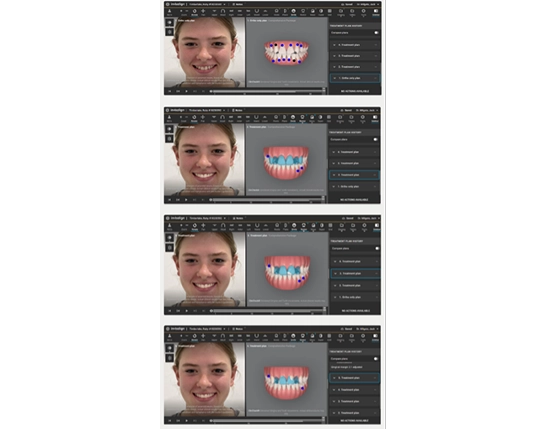
Figure 4
Treatment plan options were generated with Invisalign Smile Architect™ software
which includes teeth movement with Invisalign® aligners and restorative options to restore the congenitally missing upper lateral incisors.
Treat and monitor
I scanned the patient to monitor treatment progress using the Align™ Oral Health Suite during the teeth movement phase with Invisalign® aligners. The simultaneous display of the 3D model, the integrated intraoral camera and the iTero™ NIRI technology images (Near Infra-Red Imaging), also helped to monitor if any interproximal caries lesions above the gingiva emerged throughout treatment (see Figure 5).
The patient completed treatment with Invisalign aligners after 52 upper and 45 lower aligners. At the last position, I scanned the patient and designed the bilateral cantilever bridges using the iTero™ Design Suite powered by exocad™ software (see Figures 6 and 7). This solution not only makes my practice more efficient but also saves the practice and patient extra visits, elevating everyone’s experience. In addition, keeping simple procedures in-house has resulted in a cost-effective approach for my practice, as well as improved experience for our patients.
A fixed wire retainer was placed in the mandible, and a Vivera™ retainer was created for the upper arch.
The Align™ Oral Health Suite assists me in showing the patient and her parents the before and the after as proof of all the work completed in 12 months. Once the patient reaches the end of her development and growth in a few years, we will assess her case for dental implants (see Figure 8).
Swipe to view more.
Efficiency and potential for practice growth
Working with the iTero™ scanners and Invisalign® aligners, can enable time savings and improved quality of records. We can complete the scan of both arches very quickly, and then use multiple features, such as the Align™ Oral Health Suite to communicate with patients and discuss treatment options. The ability to run simulations to help patients envision how treatments may look, is enough reason to establish a digital workflow.
Moreover, we can design splints and temporary and fixed prostheses that can be printed in your office. This enhances the patient experience since it allows for chairside solutions on the same day.
When examining this clinical case, this patient came in for a new patient exam, a cleaning, and a build-up. The iTero™ scanner proved a great value in communicating the patient’s dental needs and our proposed functional and esthetic solution. This treatment, designed to last for years, provides a reliable interim until the patient is ready for dental implants. The priceless improvement in the patient’s smile, particularly given her young age and the significant impact of appearance favoring the adolescent’s confidence, underscores the importance of our treatment plan (see Figures 9 and 10).
When analyzing the number of procedures, they went from three to four procedures with a $9,000 incremental revenue3 (see Figure 11). However, the most important indicator to me was the family’s trust and the clinical outcome. This fulfills me as a professional and validates my practice’s reputation in our community.
As a result, families like this one, put out a good word for my practice, and that helps us have a sound pool of new patient consults and established patients coming into my clinic. General dentists have in iTero™ scanners a valuable device that will help build patient understanding and trust in their diagnosis and treatment recommendations. The efficiency of treating multiple oral health needs digitally, can help you to offer simple time-saving same-day solutions increasing the experience of patients and the capacity of your clinics.
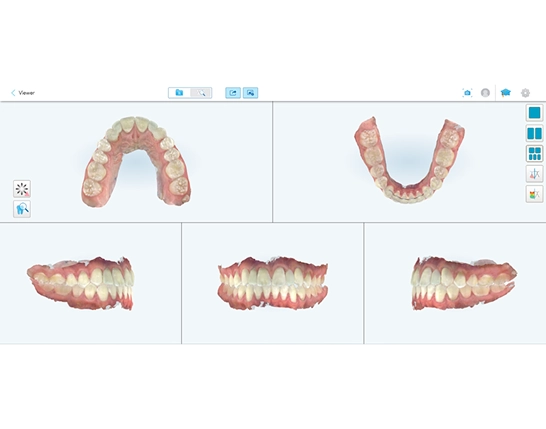
Figure 9
Scan from final position and views after placing the cantilever bridges.
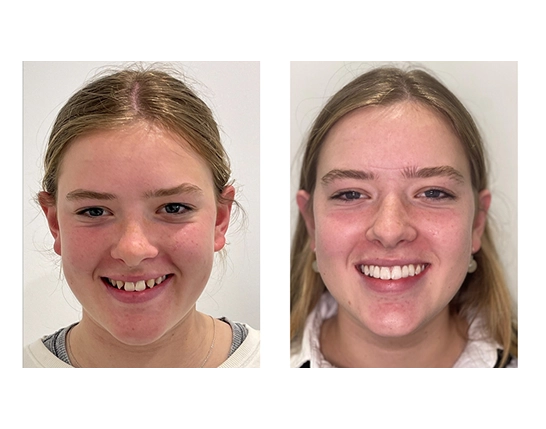
Figure 10
Initial frontal photograph contrasting with the last position and after placing the bilateral cantilever bridges.
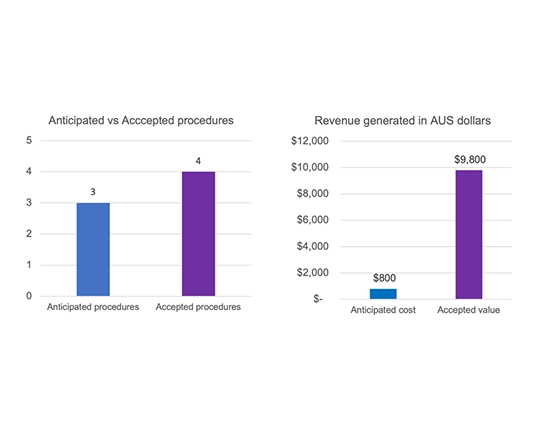
Figure 11
Contrast between anticipated and accepted procedures and revenue.
- Scanning is at the independent discretion of the healthcare provider.
- One minute scan**Patient scans can be completed in as little as 60 seconds with the same accuracy and reliability that you have come to expect from iTero element scanners. Actual scan times depend on individual experience.” This is based on 40 iRecord scanning sessions with average scan time of 58 seconds by 2 experienced persons scanning. Data on file at Align Technology, as of February 10, 2017.
- Examples are for illustrative purposes only and do not guarantee a particular result.
The opinions expressed in this publication are those of the author and may not reflect those of Align Technology, Inc. The authors were paid an honorarium by Align Technology, Inc. in connection with this publication.
